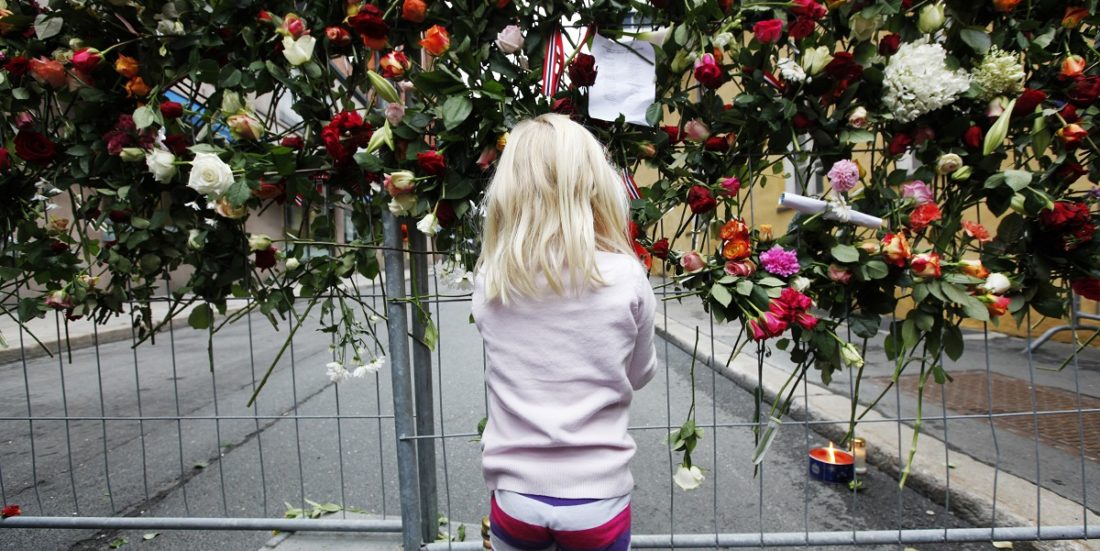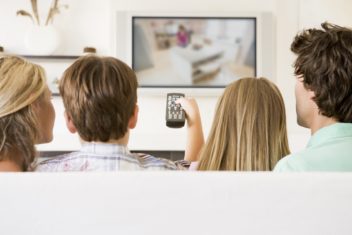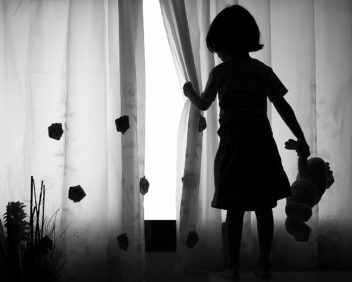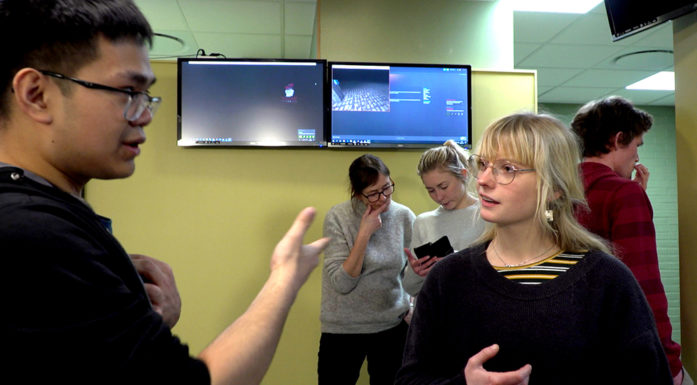Talking to children about war and disasters
Children can’t be shielded from all the dreadful news in the media – but we can help them cope with it.
NEWS: How should concerned parents guide their children when news is available 24/7?
Advice for adults
- Talk to children about the news, not over their heads with other adults, but with them
- Silence is worst
- Your fear and your reactions affect your child more strongly than dreadful news
- Let the child steer the conversation; correct misconceptions with facts
- Be specific with examples
- Adapt explanations to child’s age; toddlers need different information than teens
- Let children know that your family is not in danger
- Young children can play and draw; older children need information about event background and consequences
- Watch your opinions – don’t demonize other ethnic groups or religions
- Tell children about solutions: emergency aid, the United Nations, charity fundraisers, Doctors Without Borders
- Maintain optimism about the future
“Parents can’t protect their children from reality. Instead we need to give children the tools to cope with it,” says professor Soilikki Vettenranta.
Vettenranta works in the Department of Education and Lifelong Learning at NTNU. She has many years of experience with children and the media, and also has a background in both television journalism and crisis communication. Now she is in the news for her book Krig og katastrofer i media – De unges møte med brutale nyheter [War and disasters in the media: young people encounter brutal news,] to which assistant professor Daniel Schofield also contributed.
Children cannot be shielded
Not too long ago, families would usually gather around the television to watch the news. Parents could control TV viewing relatively easily, sit with their children and guide them through the news. But social media has changed all that.
The news situation has become more private and individualized. Through social media, young people have access to news around the clock, and they often share news with friends.
“Most kids nowadays have a pc, a mobile phone or a tablet. Reading the news has moved away from the family living room to the child’s room or the schoolyard, where kids surf the news alone or with their buddies,” says Vettenranta.
Today it is almost impossible in practice to prevent children from accessing the news and fake news from around the world.
But Vettenranta believes that children shouldn’t be shielded from the news.
“We may think that we’re protecting our children, but instead we’re just leaving it to the kids to exchange opinions, and the fantasies and rumours can be worse than reality,” she says.
- You might also like: The day terrorism came to Norway
Adapt the conversation
Children need to be involved and not be reduced to passive listeners. If the adults are talking about disasters and war over the heads of children, it can be very scary for the little ones.
“It’s important for parents to talk with their children. Silence is the worst approach. Talking about war and disasters is important, but the message has to be adapted to the child’s age, maturity and cognitive abilities,” says Vettenranta.
She encourages parents to let their children steer the conversation. They may not be frightened about the things parents think they are. Research shows that parents experience news of disasters differently than young children. Ask the children what they think. Ask them if they are afraid of anything.
“Young children experience news in a fragmentary way, and they don’t understand that it’s the same terrible news that is being re-broadcast all day long,” Vettenranta points out.
A single news report that is broadcast over and over again can turn into a scary stream of terrifying events for a child. Vettenranta mentions a kindergartener, who wondered if the newscaster was a terrorist, since he talked about terrorism so much.
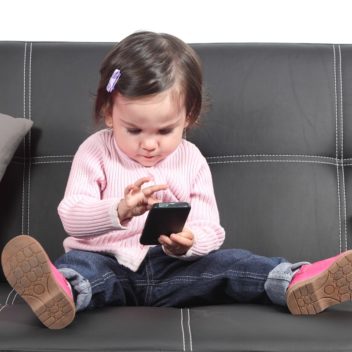
Nowadays it’s almost impossible to prevent children from accessing news and fake news from around the world. Photo: Thinkstock
Simple explanations
A kindergarten child and a 16-year-old are clearly different.
Older kids can get be supported by giving them more information. It can help to link historical or geographic locations to current events. A 10-year-old might benefit from being told some of the background of the refugee crisis, or about various religious movements.
Often children want to hear solutions as well. They want to help, but may feel powerless to do anything. Then parents can talk about different charities that they could support.
But the youngest children need simple explanations.
“Safety and protection from the adults closest to them is what’s most important to them,” says Vettenranta. “Be as concrete as possible when talking to children – ‘Afghanistan is farther away than Trondheim,’ for example.”
Very young children need to hear that the incident happened far away, that this is not something that happens here, and that this will not happen to them or someone they love. The adults should never lie, but they do not have to explain everything in detail.
- You might also like: How attentive are children in traffic?
Proximity increases anxiety
“Children get the most upset if they can identify with someone or something in the news,” says Vettenranta. They may pose questions like, ‘Did the event happen to their age-peers, can it happen here, can it happen to me, is it near where we live?’
All these factors intensify the experience. Thus, children could find the shooting of twenty schoolchildren in Sandy Hook Elementary School in 2012 more frightening than the 9/11 terrorist attacks in 2001 that killed 3000 people.
In general, children get the least anxious when an event happens far away or the victims look different. Since we can’t do much about natural disasters, they are less intimidating and “wicked” than deliberate acts of violence. It is much worse when people commit monstrous acts.
An exception is the 2004 tsunami in Southeast Asia, where many Norwegians were vacationing when disaster struck. The event hit closer to home because Norwegians were involved, and the extent of the devastation reinforced that impression. But that wasn’t all.
Vettenranta describes how, after the tsunami, the media showed pictures of children walking alone in the wreckage and looking for their parents.
Images like these have a powerful impact on young children. Children’s big fear is that something will happen to their parents. The prospect of losing their parents and being left on their own can be terrifying. Feeling helpless fills them with dread.
Stay calm
“Parents aren’t aware of how their own reactions affect their children. Adults’ reactions can be scarier for kids than the actual news of a catastrophe,” says Vettenranta.
Children get scared more if the parents are scared.
“We see fewer fear reactions when parents behave calmly. If parents get excited, children will, too,” she says.
Vettenranta has done some research on the 2011 Norway attacks.
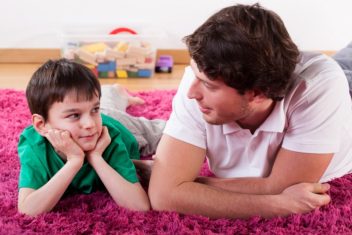
By watching the news with their children, parents have an opportunity to correct misunderstandings and provide additional information. Photo: Thinkstock
The Norway attacks were a situation where “the perpetrator was one of ‘us’ – someone’s neighbour and schoolmate. The ability to identify with a person is important,” says the professor. “That’s why it was it so disturbing and frightening for children.
By watching the news with their children, parents have an opportunity to correct misunderstandings and provide additional information. In exchanges with their friends, kids’ fantasy can take over and lead to wrong perceptions.
Role of schools
But parents don’t carry sole responsibility here. Schools need to be a part of the support network for children when something traumatic occurs.
Schools have emergency plans for how to respond to various crisis situations, but how these plans are being used and how familiar the staff are with them varies considerably. Often it is up to the teachers themselves to decide. Not all schools implement the plans. At one school in Østfold county, the teachers were unaware of any such plans, even though only one year had passed since the terror attacks.
She shares a positive example of a small school in Hordaland county. The teacher describes how she managed an emergency situation:
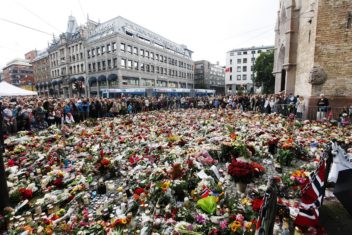
Social media can be wonderful tools for bringing people together, as in this photo from 22 July 2011. However, they can also quickly spread false statements or alternative news. Photo: Torbjørn Kjosvold, Norwegian Armed Forces
“You need to have a feel for how much students can take in, and how much they need to talk about the situation … Most important to me was to listen to their thoughts, and then try to help by putting them into a correct light. Not everything they bring is grounded in reality. Misinformation tends to snowball.”
This is how it should be done, says Vettenranta.
Optimism important
Schools need to provide media instruction. Social media can be wonderful, helping to organize large events like the “rose march” in Oslo after the Norway attacks. However the same tools can also quickly disseminate misrepresentations and alternative news.
“Children have to learn to distinguish editorial reporting from comments and opinions. They need to learn to identify sources of information and to make critical judgments. Young people will end up with “media dyslexia” if they don’t build this media competence. They’re unable to be critical,” says Professor Vettenranta.
Personally, I believe it’s important for young people to feel optimistic about the future. We’re exposed to a gloomy outlook. Children want to be active and engaged.
It is not enough to be technically adept at using social media. Young people also need to learn healthy scepticism about a lot of what is floating around out there.

Part of the government quarter after the terrorist bombing in Oslo on 22 July 2011. Photo: Torbjørn Kjosvold, Norwegian Armed Forces
Little research done
Children’s reactions to news of disaster is one area media researchers have not looked at closely enough, says Vettenranta. The main reason may simply be that you cannot expose small children to violent imagery. Crisis psychiatrists have done quite a lot of research, but they usually talk with children and adolescents who are exposed to terrible events themselves.
“We need more research on Norwegian children’s media experiences of war and disasters,” says Professor Vettenranta.
Finland has researched children’s reactions to news events all the way down to kindergarten age.
The media’s own role
Finland was exposed to two school shootings – in Jokela in 2007 and Kauhajoki in 2008 – resulting in the loss of many young lives. Most of the victims were young people, and the events thus affected children and youths particularly strongly.
Vettenranta thinks the journalists in Norway did a better job working with youngsters after 22 July than the Finnish media did during the school massacre in Jokela.
But the media learned from their own mistakes, and in Kauhajoki the year after, the media did not focus on children as much in their images, by disrupting memorial services or making urgent requests for interviews.
Young children cannot easily distinguish between fictional scenes and reality. Mixing fact and fiction in the same report is the worst, such as when fake news about a global environmental catastrophe was aired in the middle of an entertainment program on Norwegian TV a year ago. This was absolutely reprehensible and especially scary for children, says Vettenranta.
- You might also like: Children exposed to adult radiation levels from CT scans
OK to shield children in past
Previously, shielding children was the proper thing to do. But attitudes towards the relationship between children and adults have changed in the course of a few generations. Most parents want to communicate with their children, but don’t know how. In the current media situation it’s more important to become adept at coping than protecting, although the youngest children should be shielded.
Vettenranta comes from a family where the adults often talked about the Winter War against the Russians. They told horrific stories from that time. But the children were not involved, although they were allowed to listen.
“We never dared ask anything. We weren’t supposed to ask,” she says.
Instead, play gave children an outlet for their thoughts, with some children playing Russian soldiers, while the others were Finnish.
“Personally, I think it’s important for young people to feel optimistic about the future. We constantly being exposed to a gloomy outlook. Children want to be active and engaged,” says Vettenranta.
